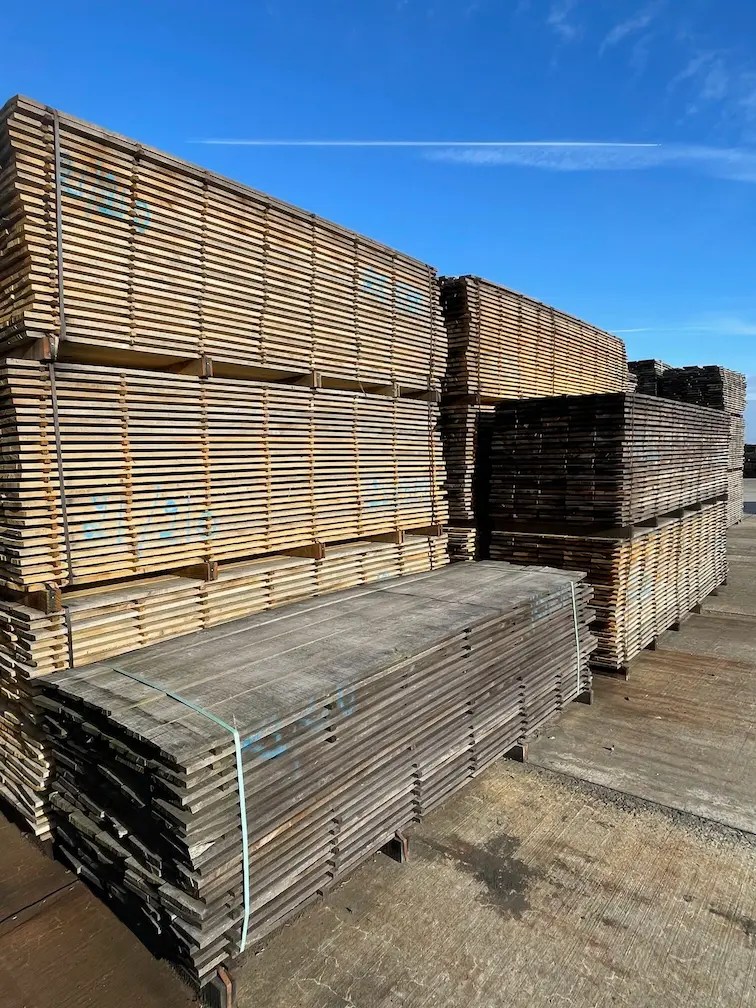When it comes to combining natural aesthetics with reliable weather protection, Timber Cladding stands out as one of the most versatile and sustainable exterior finishes available. It not only enhances the visual appeal of buildings but also provides insulation and long-term durability. In this blog, we’ll dive deep into everything you need to know about Timber Cladding, from its benefits to its applications, and why it could be the perfect solution for your next construction project.
What is timber cladding?
Timber cladding is a construction technique where wooden boards are attached to the exterior or interior walls of a building. This cladding acts as a protective layer against the elements while offering a stylish and natural finish. The boards can be arranged in different styles such as horizontal, vertical, or diagonal patterns, depending on the design aesthetic you want to achieve.
Timber used for cladding is usually treated for durability and weather resistance and can come in various species such as cedar, larch, or oak. Sustainable options like FSC-certified wood are increasingly popular for eco-conscious builders.
The main benefits of timber cladding
There are several reasons why Timber Cladding is such a popular choice in modern and traditional architecture alike:
- It adds a natural and warm appearance to any building, blending well with the environment.
- It improves thermal insulation, helping reduce energy costs by keeping interiors warmer in winter and cooler in summer.
- It acts as a protective barrier, shielding the structure from rain, wind, and sunlight.
- It is highly customisable in terms of finish, colour, and pattern, allowing for endless design possibilities.
- It is often made from renewable materials, making it an environmentally friendly option.
These benefits make Timber Cladding a valuable addition to both residential and commercial properties.
Sustainable timber cladding: a conscious choice
Opting for Timber Cladding from sustainable sources is an excellent way to reduce your building’s environmental impact. By choosing FSC- or PEFC-certified timber, you ensure that your materials come from responsibly managed forests that prioritize regeneration and biodiversity.
Using sustainable timber also helps lower your carbon footprint, especially when compared to more carbon-intensive cladding materials like metal or plastic. It’s a choice that supports both the longevity of your project and the health of the planet.
Want to learn more about environmentally responsible wood choices? Read our blog on Sustainable Timber for deeper insights.
Common types of wood used for cladding
Several timber species are commonly used for Timber Cladding, each offering unique characteristics:
- Cedar: Naturally resistant to decay and insects, with a rich colour that ages beautifully over time.
- Larch: Strong and dense, often chosen for its rustic charm and durability.
- Oak: Known for its hardness and distinctive grain, ideal for premium finishes.
- Thermally modified wood: Enhanced for stability and resistance to moisture without chemicals.
Each type has its own appeal depending on the climate, building style, and desired finish.
Interior vs exterior timber cladding
Timber cladding isn’t just for exteriors—it can transform interior spaces as well. Here’s how it’s used differently:
- Exterior cladding is designed to withstand the elements, often treated or thermally modified to enhance weather resistance.
- Interior cladding is more about design, adding warmth and texture to walls or ceilings, often left untreated or lightly oiled for a natural look.
Using timber inside the home can also improve acoustics and indoor air quality, making spaces feel more grounded and inviting.
Timber cladding maintenance and care
To keep Timber Cladding looking its best and performing well over time, follow these simple maintenance tips:
- Inspect regularly for signs of wear, insects, or water damage.
- Reapply protective oils or finishes as needed, usually every 2–5 years, depending on exposure.
- Clean surfaces annually to remove dirt and mildew.
- Ensure good ventilation behind the cladding to prevent moisture buildup.
With proper care, Timber Cladding can last decades and age gracefully, taking on a beautiful silver-grey patina if left untreated.
Installation tips for timber cladding
Proper installation is key to the performance and longevity of Timber Cladding. Consider the following guidelines:
- Use corrosion-resistant fasteners like stainless steel to prevent staining.
- Install vertical battens for ventilation behind horizontal boards.
- Leave expansion gaps to allow the wood to move naturally with humidity changes.
- Seal all cut ends to protect against moisture ingress.
If you’re unsure about installation, it’s best to work with a professional to ensure everything is correctly fitted and weatherproofed.
For more on natural wood finishes and preparation, have a look at our post on Quarter Sawn Oak to explore how precision sawing improves performance and aesthetics.
Why choose timber cladding over other materials?
Compared to other cladding options like vinyl, brick, or composite panels, Timber Cladding offers:
- A natural, biodegradable solution that reduces waste.
- Better insulation properties for eco-friendly building.
- Customization in texture and colour through various treatments and stains.
- A timeless look that complements both modern and rustic designs.
It’s a smart investment that pays off in beauty, performance, and sustainability.
Conclusion
Timber cladding is more than just a design feature—it’s a durable, sustainable, and aesthetically rich building solution. Whether you’re aiming for a modern façade or a cosy interior upgrade, timber provides the flexibility, warmth, and environmental responsibility that today’s builders and homeowners are looking for. Ready to transform your building with beautiful, reliable Timber Cladding? At Wholesale Timber, we offer a wide selection of sustainably sourced cladding solutions to suit any project. Contact our team today to explore our range and get expert advice tailored to your needs.
